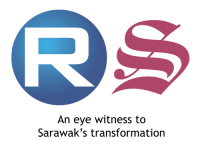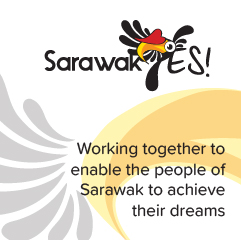The digital creative industry is making a huge contribution to the global Digital Economy.
According to the Department of Statistics Malaysia (DoSM) in 2020, the creative industry contribution towards the gross domestic product (GDP) stands at 2 per cent for the last five years.
Chief statistician Datuk Seri Dr Mohd Uzir Mahidin said that the industry is also said to be responsible for the employment of around one million people.
He also added that while the industry’s exports maintained its contribution at 0.2 per cent, the contribution of employment decreased to 5.7 per cent in 2019.
The main contributions of the creative industry towards the economy are the multimedia industry with 50.7 per cent, followed by the culture and art industry (49.2 per cent).
In reviving the creative industry’s activities, agencies such as FINAS, CENDANA and MyCreative Ventures will intensify various initiatives.

A total of RM188 million from the National Budget 2022 is provided to continue initiatives such as the Digital Content Fund, Digital Multimedia Content project, Film Incentive, Perkasa Modal Insan Program and SOCSO protection for artists.
| No | Program | Allocation |
| 1 | Digital Content Fund | RM60 million |
| 2 | Digital Multimedia Content Project | RM90 million |
| 3 | Film Incentive | RM15 million |
| 4 | Perkasa Modal Insan Programme | RM20 million |
(Source: Touchpoints Budget 2022 Measures)
In addition, the Government next year will make the Program Riuh Keluarga Malaysia a success through an investment loan matching fund amounting to RM20 million.
The move is expected to provide 5, 000 new job opportunities.

To bring more local animation to the international stage, the Government has allocated RM30 million through the Investment Loan matching Scheme for the National Animation Platform initiative which will be operated by MyCreative Ventures.
“Household names such as Upin and Ipin, Agent Ali and Boboboi are famous not only in the country but also across the globe,” said Minister of Finance, YB Senator Tengku Dato’ Sri Zafrul Tengku Abdul Aziz in his speech on 19th October 2021.
To boost the national digital economy, allocation is also provided to improve the digital infrastructure.
| No | Project | Allocation |
| 1 | Continuation of JENDELA | RM700 million |
| 2 | ICT Network in MOE educational institutions | RM50 million |
| 3 | Digital connectivity in 40 existing PPRs | RM30 million |
| 4 | 5G services in major cities in Selangor, Johor, Penang, Sabah and Sarawak | – |
| 5 | SME Digitalisation Grant Scheme | RM200 million |
| 6 | Keluarga Malaysia Digital Economy Centres (PEDi) – Transformation of 600 PEDi into One Stop Centres/OSC for Small Entrepreneur Digitalisation Empowerment Programme (PUPUK) | – |
| 7 | Pilot Project – Malaysia Digital Nomad | RM5 million |
(Source: Touchpoints Budget 2022 Measures)
By providing and upgrading the necessary digital infrastructure, it can help promote and encourage more people to be involved in the creative industry.

For instance, the 5G services will sketch a new technological landscape and offer a better and faster user experience.
For 2022, 5G services will be expanded to 36 per cent of high-density areas including in major cities in Johor, Selangor, Penang, Sabah and Sarawak.
High Internet connectivity is an absolute necessity in the creative industry as it bridges the digital gaps and creates new jobs, especially those in the creative industry such as interior designer, graphic designer, social media managers, bloggers, animators and game designers.
Aside from that, digital nomads, people living a nomadic lifestyle who use telecommunications technologies to generate income online without a fixed physical location by doing creative freelance gigs contributes towards the creative industry.
“This group has the potential to contribute to the national economy, especially as tourists,” Dato’ Sri Zafrul. To capitalise on this development, the Government will introduce the Malaysia Digital Nomad programme to create a digital nomad community and ecosystem in Malaysia by using the tourism sector as a catalyst.






